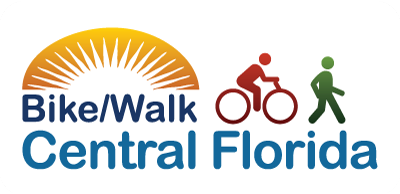Following nearly two years of construction along the US 17-92 corridor from the 417 on-ramp to Lake Mary Boulevard in Sanford, the first Pedestrian Hybrid Beacon (PHB) concept in Seminole County is now a reality!
This stretch of road witnesses a high traffic volume, with approximately 35,000 vehicles navigating through daily at 35 miles per hour or greater. The presence of hotels, apartment communities, and restaurants along the corridor creates an especially bustling environment.
After recording 31 cyclist and pedestrian crashes, including one fatality and one serious injury, between 2018 and 2022, the Florida Department of Transportation recognized the need for enhanced safety measures. Due to the roadway characteristics, a pedestrian hybrid beacon was selected for installation.
PHBs are becoming increasingly popular with State and local transportation agencies to fill the gap between unprotected crosswalks and full traffic signals to serve pedestrians. These are useful in locations such as this stretch of 17-92 with three lanes of traffic on either side of the median, where traditional crosswalk signaling and markings do not result in adequate yielding from motorists.

Multi-lane, high-volume, high-speed roadways are barriers to pedestrian mobility. Some pedestrians may choose not to make a trip that involves crossing a busy roadway, and these roads pose additional safety and mobility issues for children and people with disabilities. For these types of roadways, pedestrian crossings are primarily located at signalized intersections. The introduction of the PHB not only improves convenience for pedestrians by eliminating the need to walk an additional half-mile to reach the nearest signalized intersection but also transforms this once unsignalized midblock crosswalk into a considerably safer crossing point. A pedestrian has only a 10-15% chance of survival if hit by a vehicle going 40 miles per hour.
Statistics show that Pedestrian Hybrid Beacons have remarkably reduced pedestrian crashes by nearly 69%[1]! Because PHBs remain dark until activated, they can help increase driver attention to pedestrians crossing the roadway and reduce rear-end collisions. The red signal indication removes any judgment from motorists and, by Florida law[2] requires a complete stop. The PHB clearly conveys that motorists must stop and allow pedestrians to cross the street.
What is a Pedestrian Hybrid Beacon?
So, what is a Pedestrian Hybrid Beacon, and how are these different from a midblock pedestrian crosswalk?
The pedestrian hybrid beacons – sometimes called high-intensity activated crosswalks or HAWKs – are designed to help pedestrians cross the road safely while maximizing traffic flow. They act as a traffic signal, with a solid red light to make traffic stops for people trying to get across. However, the length of the red light is not as long-lasting as a traffic signal at a busy intersection. It allows enough time for the pedestrian to cross without causing major traffic back-ups.
How does it work for pedestrians?
When a pedestrian reaches the crosswalk, the PHB will display a solid “don’t walk” hand, like other crosswalks. The user presses the button, and the PHB goes through its sequencing to stop traffic. Once activated, the solid red hand will change to a walk sign.
Even though the sign indicates it’s their turn to cross, pedestrians should always check for oncoming cars. Like a regular crosswalk, pedestrians should finish crossing when the walk sign becomes a flashing red hand. The signal will remain on “don’t walk” until another person activates the button again.
How does it work for drivers?
For drivers, the signal begins and ends its cycle completely dark. When a pedestrian presses the button, the triangular signal will start flashing yellow, followed by a solid yellow. This tells drivers they must prepare to stop. Next, drivers will see a solid red light, which means drivers must stop.
After a while, the signal will flash, alternating between two red lights. Drivers may proceed if the pedestrian is no longer in the crosswalk. All drivers should treat the flashing red lights like a stop sign, pulling up to the bar and stopping completely, checking that the intersection is clear, and then continuing through the intersection.
When the signal goes dark again, drivers can continue through the intersection until the next pedestrian activates it.
Cities nationwide are beginning to implement new technology like pedestrian hybrid beacons. With them, the hope is to keep more pedestrians safe and increase their confidence in using marked crosswalks while maintaining efficiency for drivers.
The key here is buy-in and education. Drivers must obey the lights, and pedestrians need to use the crosswalks. All transportation users will benefit from learning more about pedestrian hybrid beacons. These videos are a good place to start: New Pedestrian Safety Signals and Understanding The Pedestrian Hybrid Beacon.
We applaud the efforts of the Florida Department of Transportation, Metroplan Orlando, and Seminole County for installing the first pedestrian hybrid beacon in Seminole County, and we hope to see more of them at high-volume, high-speed corridors where pedestrians often face a difficult choice and take their lives into their hands when crossing the street. PHBs are an essential investment in saving lives.
At Bike/Walk Central Florida, we support and advocate for improvements like PHBs that protect pedestrians and bicyclists while maintaining driver efficiency. The more people feel comfortable walking, the fewer vehicles will be on the roadway, reducing overall traffic conditions. It is important to remember that everyone shares the roadways, and courtesy goes a long way.

